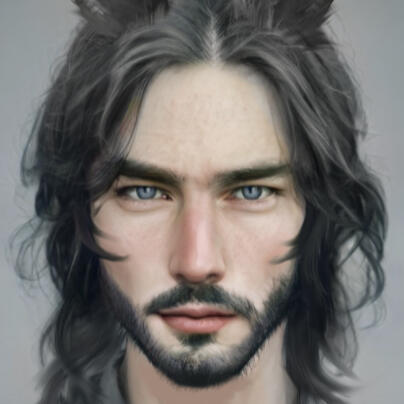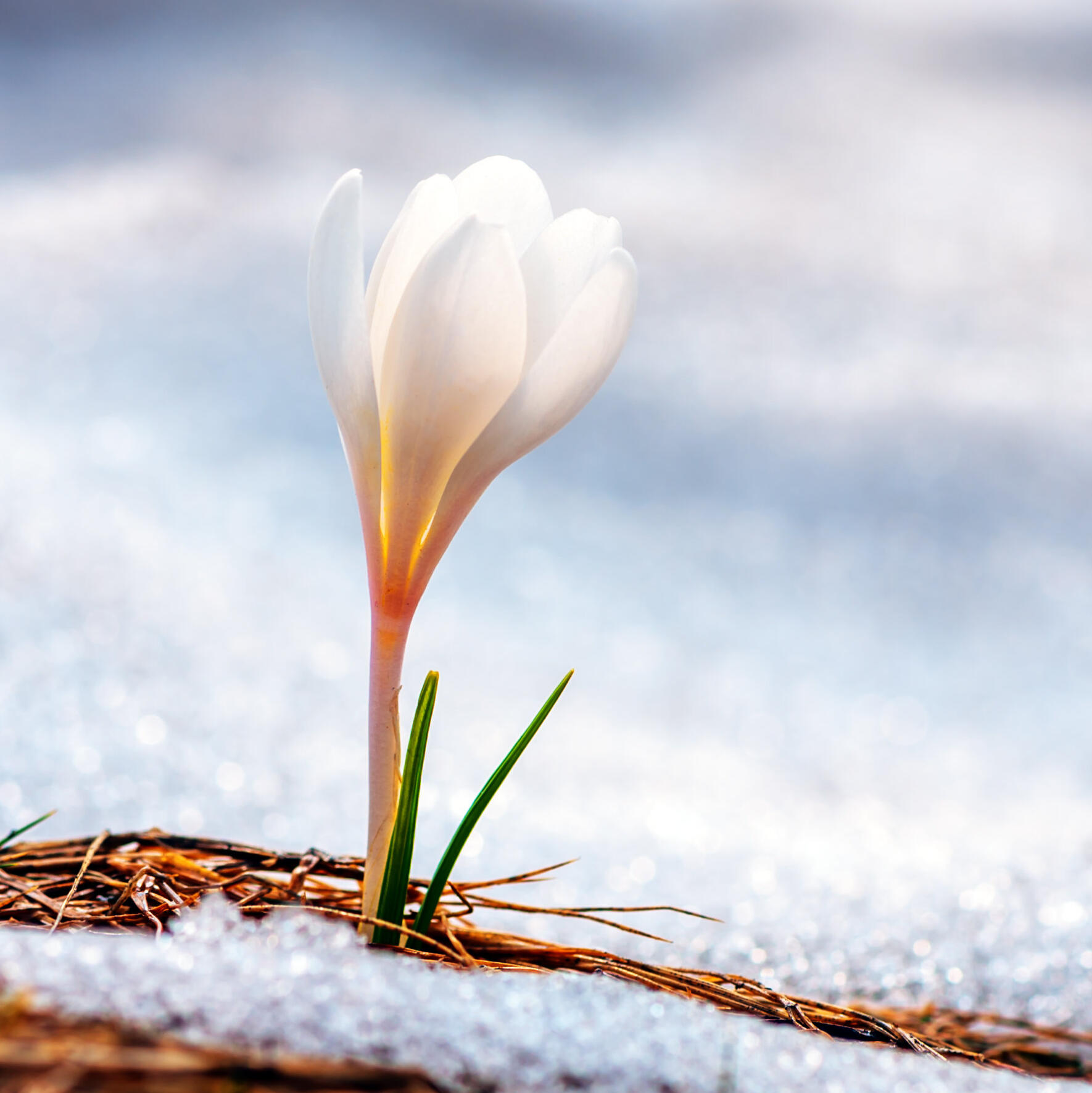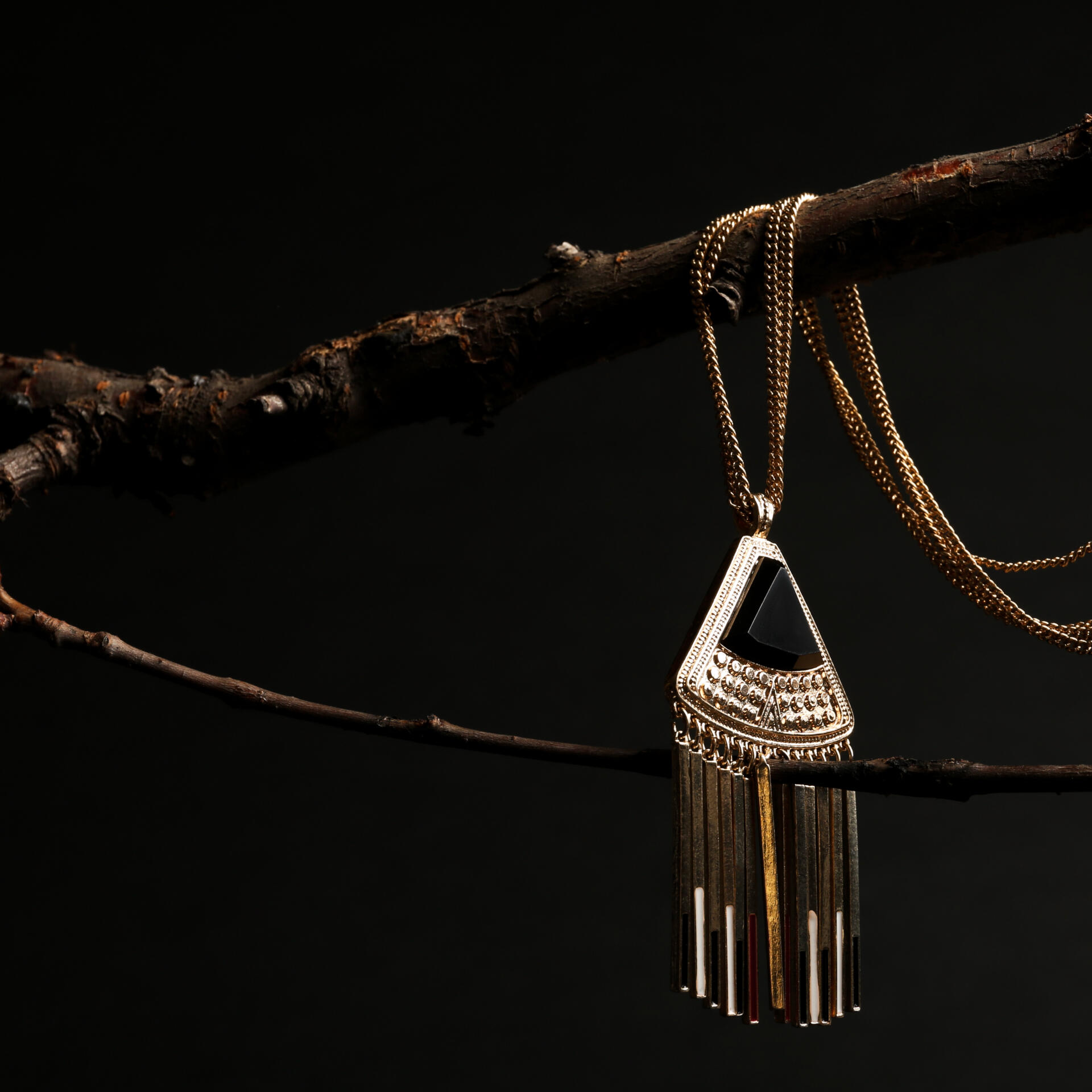Hríð
snow & silence
[/ree-th/]
.
.
North of the once proud city of Rabanastre, upon some of the highest peaks of the Skatay Range, lives the Hríð tribe amidst the near eternal snow. One can easily wonder why they chose to migrate from the temperate forests to the snow-peaked mountains all those centuries ago. The answer is far from simple and maybe the truth of it is lost to time. It's undeniable, however, that even the cold and silent peaks have much to offer to those courageous enough to call it home; rare herbs, wild beasts with thick and luxurious fur and an abundance of ice crystals. Thus the tribe remained and prospered, mainly through barter with other tribes, supplying them with the resources one can only find up the mountains, while they in turn receive what they can't grow or obtain in such a harsh climate.The tribe is comprised of the main village, which uses the cliff as protection against the northern wind, and a handful of smaller outposts to protect huntresses and gatherers from the elements should they need a respite. The men of the tribe make use of them regularly and keep them well furnished with chopped wood and dried rations, extra tools, blankets and whatever else might be necessary to spend a night or even a few suns should the weather be unkind.As for the village, its structures are made with a mix of stone and wood. Instead of many small individual houses, they opted for bigger halls, where they can preserve resources by maintaining a single hearth burning. Meals are prepared there for everyone, and a weary huntress may find a bed in a quiet corner or on a second floor. Music and songs are common and add an air of conviviality to the halls. The location of the village wasn't decided on a whim either, but rather built around a natural hot spring surrounded by evergreens.In the very short summer, when some of the snow manages to melt - at least the one away from the high peaks - many from the tribe travel further down the mountain to gather fruits and herbs and hunt the beasts that never venture to the peaks. This is also an ideal time to travel to nearby tribes to trade and barter, both for material necessities and news of the world.
.
.

Sharp of hearing
silent of steps
Ever felt that silence after a snowfall? Like every sounds are muffled, as if nature itself is holding its breath. Thus prey and predator have learned to thread carefully, less they attract unwanted attention. It comes as no surprise that the Veena residing there have also developed a heightened sense of hearing, even considering the racial advantage of the viera. Legend claims that they can hear the sound of snow falling...Speaking of ears; the members of the Hríð tribe have shorter ears with thicker fur as a way to preserve body heat and avoid extremities from freezing. It's also not uncommon for males to sport a beard to protect their face from the cold. Their skin tone is very pale, as they spend most of their time under the canopy of trees rather than venturing in the glaring white of the mountainside, with no protection from wind nor biting frost. Even their hair took on white, silver and gray shades, mimicking the fur of the arctic beasts residing in those same forests.
to find balance
to give back
Akin to their Far-Eastern 'neighbors', the Hríð tribe believes in spirits inhabiting the forest and tied to natural phenomena; ice, water, light, darkness, trees and plants. Any kit will be taught to respect those elements and accept that they each have their duality; a balance of opposites.In learning that every end brings forth a new beginning do they also accept that, one day, they'll have to give back to nature for what it has given them. Thus a hunter killed by a beast will be left there and not brought back to the village to be buried; their corpse nourishing the beast who was victorious (not to mention the frozen soil being hard to dig). A personal item may be retrieved in lieu of memento and brought back to the village.

warmth of a hearth
At the head of the tribe is the gyðja, both a chieftess and high priestess. She presides over matters both diplomatic and spiritual and, with the assistance of her advisers and the veterans of the tribe, she sees to the well-being of her people and the education of the young. She'll usually name her own successor, someone who shows great potential and the same love for their people.The gyðja resides in the biggest hall in which the hearth burns bright at all times. She'll welcome anyone to share her fire and a meal, may they be from the tribe or a visitor from another tribe, and offer an ear to those who may need it. Giving advice freely, mediating between parties and officiating ceremonies of all kinds are a few of her many roles within the tribe. Those from outside the tribe may think her position to be the singular pillar that keeps it all in place, but that couldn't be farther from the truth, for those who have learned to live in this land of snow and evergreens can survive on their own. She merely symbolizes the warm hearth where her people can find respite from the raging storm.
unforgiving cold
Like with all viera, births are rare and males even more so. However, considering the harsh environment, it's not uncommon for two seasoned males - sometimes bonded - to travel together, with a youngling or two under their care. They'll follow the same 'life pattern' as their counterparts in other regions, going back to the village after many turns of the seasons, to mate and stock up on supplies they don't make for themselves on account of their nomadic lifestyle.It's quite unlikely that they'll ever have to fend off outsiders so high up in the mountains, thus their roles are of mentors and scouts, relaying to the women of the tribe their findings and where they might hunt, or places to avoid following an avalanche. The Rite of Passage for a young male is harsh and unforgiving but, should they succeed, they'll receive from their mentor the mark of The Awen in the form of a scarification on their left pectoral. It symbolizes balance of opposites, as well as the three divisions of the soul – the mind, the body and the spirit.

of words and power
of mind and heart
The Hríð believe there is power to words and their names even more so. Thus, while many have left their ancestral home over the centuries, none has ever kept their Forest Name once they ventured past the borders of the Veena territory. It's also customary for sworn sisters or brothers, or bonded couples, to exchange a token with their name engraved on it, thus entrusting the most sacred part of themselves to a loved one.This tradition apparently has roots in a trait often exhibited in those of the Hríð tribe; hyper-empathy. While members of the tribe may fall into one or more of the six types of empaths, they regardless have the potential to form an emotional bond with someone that goes beyond what is commonly seen between two individuals. In the case of sworn brothers or sisters, and moreso between lovers, this connection is known as a lifebond and symbolized by the exchange of their true names. In that regard, the members of the Hríð tribe do not marry, but instead bond for life, the simple ceremony and exchange of tokens performed without the requirement of any witnesses.

You cannot possess me for I belong to myself
But while we both wish it, I give you that which is mine to give
You cannot command me, for I am a free person
But I shall serve you in those ways you require
Thus I entrust to you my name, my heart;
..........- for I trust you will keep them safe